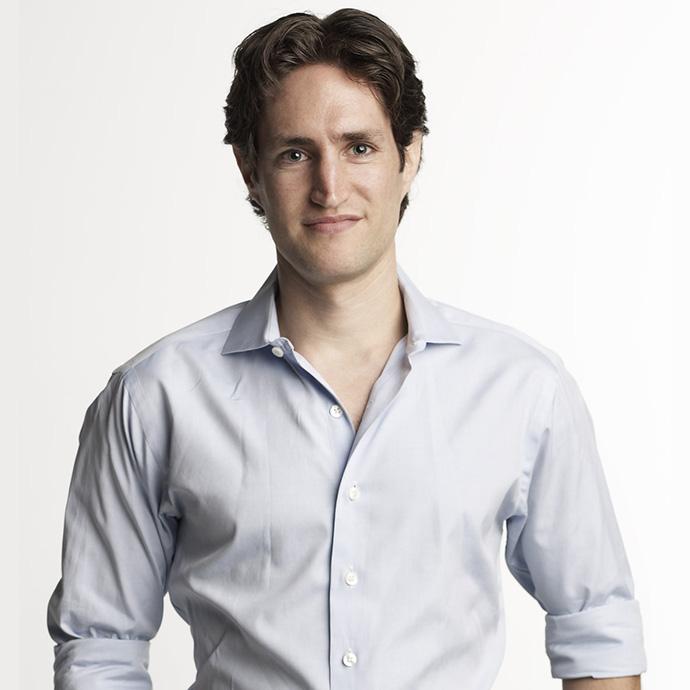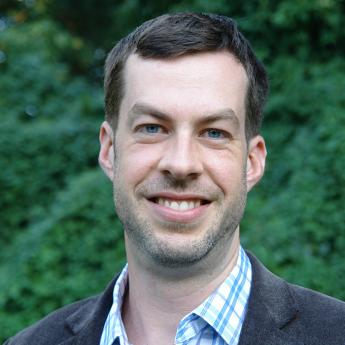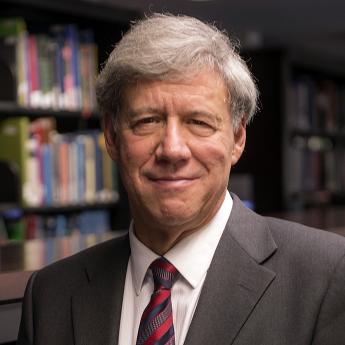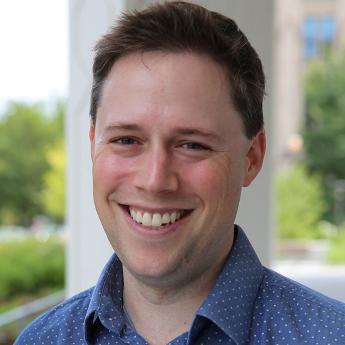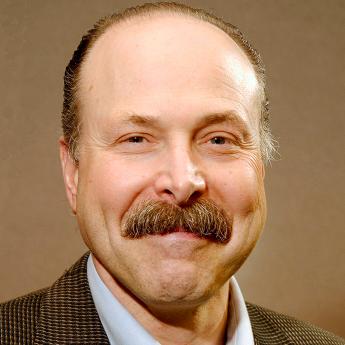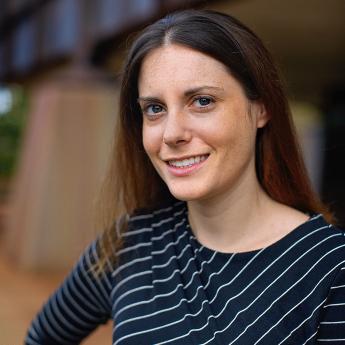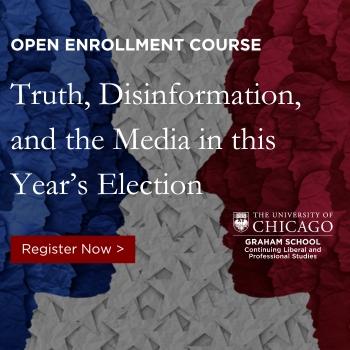Show Notes
We've all been stuck at some point in our lives — whether we've been stuck at a job and wanting to make a career change, stuck in a location and wanting to move somewhere new, or stuck in relationships or friendships. But the method to getting “unstuck” and achieving a breakthrough might be easier than you think.
Using research-backed tools, New York University's Adam Alter shares his tips for how to get unstuck in his new book, Anatomy of a Breakthrough. Alter shares success stories from some of the world's most successful people, and explains how altering your thoughts and habits could lead you on a better path to success. Alter is a professor of marketing at New York University's Stern School of Business and the Robert Stansky Teaching Excellence Faculty Fellow.
Subscribe to Big Brains on Apple Podcasts and Spotify.
(Episode published June 27, 2024)
Subscribe to the Big Brains newsletter.
Please rate and review the Big Brains podcast.
Related
- Feeling Stuck? Here Are 5 Ways to Jumpstart Your Life. — The New York Times
- How to Be More Creative — The Atlantic
- Adam Alter: How Do We Take Back Control Of Our Attention? — NPR
Transcript:
Paul Rand: Do you feel stuck? Maybe it’s your career, where you live, your relationship. Almost every one of us has felt stuck at some point in our lives. In those moments, we’ve all thought the same thing. If there only was some guidebook backed by research that could tell me how to get out of this situation.
Adam Alter: Well, as a psychologist, I’ve been studying these questions. How do we deal with this? What are the best steps forward? Are they predictable? Is there a sort of menu of options you can draw from? Is there a roadmap?
Paul Rand: That’s Adam Alter, a business and psychology professor at NYU and the author of a recent book, Anatomy of a Breakthrough, How to Get Unstuck When It Matters Most.
Adam Alter: I’m not interested in any sort of momentary frustrations that we all feel during pretty much every day. I’m really interested in stuckness that’s protracted, that goes on for sometimes weeks, months, years, in some cases for an entire life. But I’m also interested in the kind of stuckness that is tractable, that you can act on or work on if you know what to do.
Paul Rand: But knowing what to do is exactly the hardest part. And when we’re stuck, it can feel like there’s something uniquely wrong with us.
Adam Alter: We tend to believe that we are facing a more difficult set of obstacles than other people face, and that they have more benefits or advantages than we do.
Paul Rand: But it’s important to remember that that isn’t the case. Stuckness is a universal phenomena, and that means there’s something we can do about it.
Adam Alter: Sometimes you’re stuck and you know exactly what you need to do, you just can’t do it, and sometimes you’re just stuck and you’re not even at the point where you know which direction to pour your energy to find a breakthrough.
Paul Rand: From hacking your brain to finish long-term goals, to overcoming insurmountable mental obstacles, to knowing what the optimal amount of failure really is before moving on. Alter has been using behavioral science to research the secrets behind completing your goals and reaching a breakthrough.
Adam Alter: And that’s what this book is designed to do. It’s designed to be that roadmap for people.
Paul Rand: Welcome to Big Brains, where we translate the biggest ideas and complex discoveries into digestible brain food. Big Brains, little bites, from the University of Chicago Podcast Network. I’m your host, Paul Rand. On today’s episode, the science behind making a breakthrough.
Are you in endlessly curious? The UChicago Graham School has the courses you need to feed your mind. Starting this September, the school is offering a timely course on truth and disinformation in media coverage, all in the lead up to the 2024 elections. It’s an opportunity for those who want to understand the complex dynamics at play in today’s media landscape, and how it may influence elections. Discover all our offerings and find your perfect course at graham.uchicago.edu. The key word in all of your dialogue here is this idea of stuckness or being unstuck. And I wonder if you can just set the stage for us of number one, where did this interest in being stuck come from?
Adam Alter: I was originally interested in this, I think it probably began when I was in college as an undergrad. I was studying actuarial science, and I didn’t love it. It wasn’t what I wanted to do with the rest of my life. And six months in, I was on a fellowship program. They came to me and they said, “You’ve got a choice. You can either quit within the next week, or if you quit at any point after the next week, you’re going to have to pay back all the fellowship money,” which I knew I wasn’t going to be able to do comfortably. So I stopped doing that degree immediately, and then I was stuck. I had no idea what I was going to do with my life.
Paul Rand: And do you think there’s really actuaries in the world that don’t think they’re stuck?
Adam Alter: Yeah, it’s a good question, isn’t it? Based on the people I was studying with, not many. A lot of them didn’t make it through the four years. I may have been the first to leave, but I wasn’t the last. And I remember that feeling of being just absolutely penned in, unable to move forward in any direction, not even knowing which direction to move in the first place. And that sort of experience has come up time and time again in my life, and it turns out to be universal, and it turns out to be something that happens to people all the time.
Paul Rand: And it’s not just your gut telling you that people get stuck. You’ve actually done plenty of survey work, and being stuck is a pretty human condition, isn’t it?
Adam Alter: Yeah, it was one of the first things I did actually, because when you find that something’s plaguing you, if you’re a researcher who studies behavioral science, what you then ask, well, what I always ask is, is this just me? Am I quirky on this dimension? And in this case... Sometimes the answer is yes. In this case the answer was no. And so what I ended up doing was running a survey that I’ve been running on and off for years now, asking people, after I define what it is to be stuck, asking if they feel stuck in at least one respect. And because the survey has been run internationally, I have a huge amount of data from thousands of people all around the world, and I would say that 99% of them within 10 seconds of being asked the question say, “Yes,” and they can start expressing what that stuckness is.
Paul Rand: And about 50% reported not just being stuck, but having been stuck for years or even decades. Many even said they would pay thousands of dollars to be free.
Adam Alter: It occupies a huge amount of real estate. And it’s partly because when you are stuck, it’s all you can focus on. It’s sort of takes up your attention. It’s something that you think about a lot. You ruminate over it. Now from the outside, no one else can see that. That’s something that goes on essentially inside your head much of the time.
Paul Rand: A lot of the book does talk about getting unstuck, but I wonder if we could dig in for a second of, how do we get stuck? And what makes, one day you sail through, another day, you’re stuck?
Adam Alter: Yeah, I’d say broadly there are two kinds of categories of things that make us stuck. The first kind is the thing that you’re doing that worked so well in the past doesn’t work as well moving into the future. And that’s partly described by a phenomenon known as the plateau effect. So people who do exercise or who are athletes know this very well, that if you train your body, you do certain exercises or if you’re a runner or some sort of other athlete. When you do something to train, eventually what worked really well at first stops working as well. Your body gets used to it in some way, it doesn’t produce the same benefits. It turns out to be true for learning as well, for intellectual pursuits as well. So if you’re learning a language, if you keep doing the same thing over and over and over again, it tends to work less well over time.
There’s a fair amount of evidence for that. So that’s the first thing. The other thing is that the world actually changes. So what works well now in the current conditions might not work so well as the world changes and shifts. One really big concept here is a concept known as life quakes. This idea that was proposed by Bruce Feiler, a writer who’d interviewed hundreds of people, and he’d found that we tend to feel blindsided by major changes in our lives, but roughly every 8 to 12 years we experience a major life shift. A marriage, a divorce, a death of a close person, having a child, changing a career, moving to a new country, things like that. Those things happen roughly every 10 years or so.
I’ve done some research myself on an idea known as the end of decade crisis, and my colleague Hal Hirschfield at UCLA and I found lots of big data sets where we could tell how people were behaving as their age changed. And what we found was that whenever your age ends in a nine, so when you’re 29, 39, 49, 59 in the middle decades of your life, that you have this little miniature crisis where you say to yourself, “Oh wow, there’s a new decade coming, and I need to sort of figure out, am I living life the way I want to live it, is everything going the way I’d like it to go?”
If you look at the age of which people sign up to run marathons, there’s a big uptick in the nine-ending ages. So the first marathon people run is often when they’re 29, or 39, or 49, and so on. You also unfortunately see some people who say, “This is a crisis and things are not going well.” You see a rise in extramarital affairs, you see a rise in suicide, depression, and some other factors.
Paul Rand: On the nines.
Adam Alter: On the nines, yeah. So it can be very confronting to think about the passage of time. And if you don’t have a way to cope with it, it can lead to very negative outcomes. But the point is, this is predictable.
Paul Rand: If you’re on a nine right now and feeling stuck, there are a number of important lessons to draw from research to get unstuck. And important first step is to be aware of the goal gradient effect.
Adam Alter: For any long-term goal, protracted goal, something that you’re striving towards, you will find that you are most motivated, you make the most progress when you first begin, and at the end, as you get close to the goal, you get that little boost of motivation. But there’s this lull in the middle, we feel unmoored. It’s almost, if you imagine, I talk about this in the book, the idea of sailing between two points. You go from say New York to Southampton, much of that journey, you’re just kind of in the middle of the ocean. You don’t have really good signals of the passage of either time, or the passage of geography that you’re actually moving in the right direction, and that can be demotivating. You just feel like you’re kind of lost in the middle of the ocean.
Whereas as soon as you can see land, you have something to aim for, it pulls you in almost magnetically, and that’s the power of motivation as you approach your goal. And so the goal gradient describes the fact that although essentially there should be no difference between the first mile and the last mile of sailing or any other goal, when you are doing something that requires a lot of effort over a long time, it’s very hard to give that same effort in the middle part of that process. You see a lull in motivation.
Paul Rand: Let’s talk about this idea of seeing land, which is kind of this whole idea of breaking goals down into smarter parts. And I wonder if you think about this, and maybe this is this whole idea of it’s narrow bracketing or seeing short-term goals. How do you begin thinking about this idea of seeing land oftentimes?
Adam Alter: So the basic idea is that the reason you have these lulls is because the goal is so big that you can’t see the next point of positive return, when you get a little reward to kind of draw you on. So the narrow bracketing idea is to say something like if you’re a company or you’re an organization, you’re trying to raise a hundred thousand dollars for some charitable cause. If you put in front of people the $100,000 goal, they’re going to be much quicker to give you the first few dollars on the last few dollars. You see that same kind of motivational lull. So when you’ve got $50,000 to go, you’re halfway through the goal, it’s hard to get people to give. But one thing you could do is you could artificially break it down into smaller chunks. You could say the first $10,000 gets us this, the second $10,000 gets us this.
It’s the same with writing a book by the way. So writing say 100,000 words for a book, which I’ve now done three times, it’s an overwhelming task that sits ahead of you. And so one way to deal with that is to say, I’m going to break it into 100 X 1,000 words. And every 1,000 words I’m going to have a mini celebration, whatever that means to you.
It could be just sort of an intellectual celebration where you say, “I feel good.” It can be that you actually consume something you like, maybe you have a candy that you like or whatever it might be, cup of coffee. It doesn’t matter what it is, but you celebrate it in a way where by making the bracketing so narrow that you shrink the goal into lots of small sub goals, you essentially eradicate the middle. Because it’s so brief it’s just start, end, start, end, start, end.
Paul Rand: Well, this whole idea also, in getting through three books or any number of things, persistence plays a big role in this no matter what.
Adam Alter: I think one of the problems we have is when we are trying to decide whether to keep pouring energy into something, we often ask ourselves, am I getting closer? Is there some benefit to this? Is this the point where I should quit and move on? Do something else? Have I put in enough energy? And there are a number of psychological factors that make it hard for us to know how much energy to pour in. But the other thing is often, especially when it’s about creativity, what often happens is it gets before your good ideas arrive.
So an example of this would be these interesting studies on an idea known as the creativity cliff illusion. And what you do is you say to people something like, imagine you have a new business and you’ve got to come up with a new name, and you’re brainstorming name ideas for your business. Let’s say it’s a coffee shop or something like that. I want you to come up with 20 names, and I want you to tell me before you begin this task, do you think your best ideas will be in the first five, or in the final five between ideas 16 and 20?
And people almost always say, “I think my best ideas will tumble out of my head. They’ll feel fluid, and easy, and fluent.” But what you actually find is that as it starts getting hard, say idea 10 it starts to really get difficult, and grinding out those last 10 is tough. But those are the ones that are divergent, truly creative.
Paul Rand: Ah, gotcha.
Adam Alter: Yeah, the early ones are kind of boring. They’re the things that are obvious. Other people would have them, they’re expected. And so hardship where it normally tells us, for example, “Hey, I haven’t mastered this language. I’m not doing so well.” In the domain of creativity, hardship means you’re diverging from the herd, and from your own basic boring ideas. And so we often take that cue to say, you should stop before it’s time to stop. And so I often tell people something like, whenever you’re doing something that requires protracted effort, give yourself at least 50% longer than you think you’ll need.
Paul Rand: That’s really a great insight, really a great insight. There’s a concept that you come back to a lot in this book, and it’s this idea of sacred pauses. And I wonder if you could give us a little more context on what you mean by that.
Adam Alter: Yeah. So the Sacred Pause is a concept that was proposed by a Buddhist philosopher Tara Brach, and basically talks about the importance of slowing down. And the reason this is important, I think in the context of getting stuck and unstuck, is that our instinct when we’re stuck is just this flailing. We flail and we kind of go a little bit crazy. And when I used to go to school in the car with my dad, it was like a 10-minute drive. And I remember, he would rather be driving backwards but not in traffic, than driving forwards but be stuck in traffic. He just wanted to do something, anything not to feel stuck. And so as long as the car was moving, he was happy, even if it wasn’t saving time. And I think that’s how we are a lot of the time. I understand that instinct.
I always understood it as the passenger as well. The sacred pause basically says, you will never move in the right or optimal direction unless you take a bit of time to really understand where you are, to deal with the emotional consequences of being where you are. And so a lot of the book I talk about the fact that when we get stuck, the first thing we want to do is act. But you’ve got to start with the emotional side of being stuck. And I give some examples. I talk about Lionel Messi, the soccer player, some other examples there. These are all cases where slowing down, paradoxically, was what allowed them to move forward to make breakthroughs.
Paul Rand: Give me the Messi example.
Adam Alter: Yeah, I love this story. I find it totally fascinating because Messi, as far as I’m concerned, is the greatest player playing today, and possibly the greatest player of all time.
Tape: Here comes Messi.
Tape: Oh my goodness.
Tape: The genius, a geniuses in football in our modern day life.
Adam Alter: But when he started out, he was a very anxious player. There were stories of him running off the field just before a game started to go be physically sick. He really grappled with a great anxiety. A number of coaches said he’d be good, and he is very good, but I don’t know if he could ever lead other players. And then one of his coaches said, “Honestly, he’s so technically gifted that if we can overcome the nervousness that he demonstrates, the anxiety, then I think we might have one of the greatest players of all time.”
And what this coach said to him was, “What I’d like you to do is, since the first few minutes are the most nervy for you, when you’re most overwhelmed by nerves, what I think you should try to do is let’s sacrifice you for a couple of minutes. When the whistle blows, I want you to not play the game yet. I don’t want to see you doing anything. You could walk around. But what I want you to do is I want you to have a little mantra that calms you down. Say, ‘I’m playing, it’s all good. I’m okay.’ And look around. Spend your energy just looking at what everyone else is doing.”
And if you track the footprint of where everyone goes in the first five minutes of the game, most players are moving around. Messi barely moves from the center of the pitch, and he’s looking around. If you follow him, he’s figuring out where are the strengths and weaknesses on his team, on the other team, who looks perhaps injured, what technical or strategic advantage can he draw from those first few minutes of the game. And then he deploys those advantages for the next 85+ minutes of the game.
Tape: Here’s Messi, away from 2, 3, 4. Wonderful, wonderful, wonderful. How good is he? A near supernatural goal from Lionel Messi.
Adam Alter: So he’s never scored a goal in the first minute of any game, but he scored in every other minute, because he’s essentially not playing yet in that first minute. So he sacrifices that time for the good of the remaining 99% of the game.
Paul Rand: The science also shows that it’s important we view our obstacles like Messi’s anxiety, in the right way. How we frame obstacles is incredibly important. Alter demonstrated this with a research project on students at Princeton.
Adam Alter: There’s an idea in social psychology known as stereotype threat. The idea here is that if you are from a group that is not supposed to do well in a particular domain, when you attempt something in that domain, when you try to do that thing, not only are you grappling with the puzzle that’s in front of you of trying to do as well as you can on the task, but you’re also constantly thinking about the kind of threat that’s associated with being identified with the group that’s not supposed to do so well.
So in this example, in the Princeton example, there are certain schools, and this is true of a lot of good colleges and good universities, certain schools, high schools send a lot of students to a school like Princeton. There’s the Lawrenceville School, where every year something 40 or 50 students end up in the freshmen class at Princeton.
If you are from a small high school in Wyoming, you are part of a group that is not historically over or well represented at Princeton, and so you might feel a little overwhelmed by being the one Wyomingite who’s there in that particular freshman class. So what we did in the study was we asked people to do these mathematical puzzles, and these are students who are very smart. The ones from Wyoming are smart, the ones from Lawrenceville are smart. And what we did was we basically said, how many other people when you were starting here were from your high school? And we could categorize based on that, how generally threatening it was to be a student at this very imposing institution. What we found was that asking that question upfront when they were about to do this task meant that in general there was a lot of threat for the people from those smaller underrepresented schools.
They tended to do less well on the math task than did the people who went to schools like the Lawrenceville School. They didn’t feel the same threat. But if you change the way you describe it, if you say to them, just treat this as a challenge, it’s not a representation of your true ability in math, just do your best. If it doesn’t go well, remember there’s always tomorrow, and so on. You’re essentially saying it’s not threatening, it’s challenging. It’s a challenge, it’ll be fun. Then that eradicates these differences. You’re essentially liberating them from the threat of what it means for their own self-esteem and self-worth to be doing this puzzle. And it’s a really useful idea in education in general.
Paul Rand: But sometimes getting unstuck means knowing when to move on to something better, knowing when to quit. That’s after the break. If you’re enjoying the discussions we’re having on this show, there’s another University of Chicago podcast network show you should check out. It’s called the Chicago Booth Review Podcast.
What’s the best way to deliver negative feedback? How can you use AI to improve your business strategy, and why is achieving a soft landing so hard? The Chicago Booth Review Podcast addresses the big questions in business, policy, and markets, with insights from some of the world’s leading academic researchers. Its groundbreaking research in a clear and straightforward way. Find the Chicago Booth Review Podcast wherever you get your podcasts. Well, this other idea, and you talk about when do you notice to a, “All right, I’ve gone far enough.” And you talk about something called a friction audit, if I recall that correctly.
Adam Alter: A friction audit is basically asking yourself, where is there most friction, either in an area of my life or in my life in general, and can I intervene on it? So like an accountant would come to look at the books at a company and say, “All right, I’m auditing your books. I’m trying to find what’s right, what’s wrong, what needs be fixed and changed.” You do the same thing with respect to friction, or hardship, or stuckness in your life, or if you’re a company, in your operations as a company.
And so here’s a kind of nefarious, but I think really easy to understand idea. This is not one that I really endorse, but Netflix in the roughly 2000 and early 2010s, Netflix was doing quite well as a company. And one of the tasks that they were facing was, how do we get people to not stop watching when they start? How do we get them to watch more content? And what they did was they conducted essentially what is a friction audit, and they discovered that when people were not watching Netflix, they weren’t going onto some other form of entertainment. It’s not like Netflix is competing with YouTube or competing with your TV. That’s not Netflix or cable or whatever.
What Netflix is competing with, they discovered, is sleep. So the thing you do when you stop watching Netflix is you go to bed, because most people watch it late at night. So the task was essentially, we found friction. Friction is the people want to go to bed. How do we intervene on that? We remove the cues that tell them it’s time for bed. The way you do that is you change the user interface, which is what Netflix did, they introduced post play. So at the end of an episode, the default used to be, you’ve got to do something for the next episode to begin. After post play was introduced in 2012-13, when an episode ended, the default was the next one would begin playing like 10 to 15 seconds later. So if I’m sitting there in a stupor at 11:00 PM.
Paul Rand: Which we’ve all done.
Adam Alter: As we’ve all done. I’ve watched two episodes of Breaking Bad and the episode ends, and then 10 seconds later, suddenly the next one begins. It almost seems rude to end at that point. So you watch episode three, then four, then five, and suddenly you have a term in dictionaries around the world, binge viewing, which comes from that. And that’s a successful friction audit that removes a particular friction point. Unfortunately it means less sleep, but it’s a good example of a friction audit.
Paul Rand: That’s a great example of a friction audit. And then thinking about it as your own life and how to cut those things out of there is a pretty thoughtful exercise. The other thing when you talked about this idea of persevering, is this idea of it gives you more time to find luck.
Adam Alter: Yeah, exactly.
Paul Rand: What does that mean?
Adam Alter: There’s this very interesting idea that people have that somehow quality and quantity are inversely related. So the more you do of something, the less good it’s going to be, on average. So if I’m a creative at a firm, it’s not that if I sit and just really focus on one idea, it’s going to be the best. It’s that if I start with a hundred ideas, I’m likely to have a really good one. But also there’s something very basic and mathematical about the idea that if I try 10 careers or expose myself to 10 careers, there’s a better chance I’m going to find one that really works for me. And by number 7, 8, 9, and 10, not only am I saying how good is this, but I can say in comparison to the other 6 that I abandoned or experienced already, where does it sit in the hierarchy?
Paul Rand: Ah, gotcha.
Adam Alter: By the way, this applies to dating as well.
Paul Rand: Okay.
Adam Alter: So if you date one person you don’t know really, you have a sense of how you’re getting along with that person. But if that’s the first and only person you date, you don’t really know what’s good and bad about different relationships. What are the aspects or dimensions along which they might vary? So there’s a lot of research on even things like what’s the optimal number of dates to go on before you know that this is the right person for you without dating forever? There’s some research that was done I think on OkCupid, and there’s a book called Dataclysm, which was written by a guy, I think his name’s Christian Rudder.
Paul Rand: The data from that research suggests that you should reject the first 37% of people you date.
Adam Alter: The basic idea is that you’ve got to have lots of attempts to know what’s good, what works. You obviously can’t do that forever, but there’s an optimal number. And then what you say eventually is, anything that’s good enough over this mark is what I am looking for, and I’m going to say yes to that. Now, it’s a little bit strange in the domain of finding a life partner where you should be a maximizer, but certainly in terms of ideas, that’s a useful idea that, keep going basically, you’ll have better luck.
Paul Rand: Yeah. It’s also interesting on the flip side of that, you do make the point that failure is not that bad, and actually embracing failure is actually one of the things that also can help you get unstuck.
Adam Alter: Yeah, I mean, I really wish, I’m using the term failure obviously. I really wish there were another term for it, because it’s such a laden term. It’s got such negative baggage. But really what it is is, it’s the only time when you’re doing something that you learn, you really learn. If you are doing math puzzles and you get them all right, if you get a 100% every time, and you have no friction whatsoever, and let’s say failure here is getting a wrong answer and learning from it and getting feedback on it, that’s when you grow. No student doing math, say you start doing one plus one equals two. If you are one day going to be an actuary and you’re doing stochastic modeling-
Paul Rand: You really like actuaries, don’t you?
Adam Alter: I like actuaries. I do. I very much like actuaries, to be very clear. I like them, I just didn’t want to be one. But the gulf in ability, right, between stochastic modeling as an actuary and one plus one equals two is colossal. And if you get every one of those one plus one equals two answers correct, you never grow from there to the point where you’re challenging yourself and it’s difficult.
Paul Rand: Just like with dating researchers have actually discovered that there is an optimal failure rate, generally around 15%.
Adam Alter: And that is essentially the secret source and not so secret source behind athletic pursuits, creative pursuits, careers, everyone that you talk to, and this is absolutely universal, if they are honest about it will say, “Yes. Those moments where I grew in a nonlinear way, where I became better and bigger and more powerful in what I do, where those moments when I failed, got feedback, interpreted it, understood it, and then applied those updates to the next attempt.”
Paul Rand: And you did do some studies in this area and some documentation when you talked about college basketball teams in regards to this whole concept?
Adam Alter: Yeah, you can see I’m a huge, huge sports fan. So whenever I can apply my research to the domain of sports I do, and this is another good example of that. So this is research with NCAA college basketball teams. And one of the questions I had with my colleagues, some of them are sports economists, some of them are psychologists. Our question was, in the preseason before you’re playing competitive games, how difficult do you want those preseason games to be? And it’s interesting because when you talk to experts, I’ve done some work consulting with elite coaches. There’s a bit of a difference of opinion on this. So some of them will say it’s really important to be challenged. You really want to try stuff that’s difficult. You want to be stretched. You don’t want to be in a situation where you lose by 100 points, but you want to go up against a team that’s going to push you.
And there’s another group of coaches who say, no, actually what this is all about is building confidence. We want to start slowly, we want to start with some easier teams, we can build up to the more difficult teams. We certainly don’t want to lose early on, that could be really bad for us.
But what we did was we looked at, using a whole lot of data, looking at how difficult these pre-season games were for teams across about a 12-year period. And then looking at how they did relative to their ability in the actual NCAA tournament and in their tournament games, in their competitive games. And what we found was that there was a linear relationship between how hard those games were in the preseason, and how well they did over and above what you’d expect them to do based on their ability in the actual tournament.
There is a huge benefit to grappling with hardship. It makes you much better at dealing with games where say you’re a few points down, games where your opponents seem like they’re as good or better than you. We didn’t even find a ceiling. There wasn’t even a point where it was so hard that it was demoralizing and the outcome was bad. There may well be a point, but in our data, we couldn’t find strong evidence of that. It was a totally linear effect, that the more difficult your preseason, the better you do, all else being equal, when the tournament begins.
Paul Rand: Let’s keep playing on the sports realm, because you got into a discussion also about this idea of a hot streak, which is certainly a term you think of when it comes to sports.
Adam Alter: Yeah. So I wasn’t specifically talking about sports there, but I think it probably applies to sports as well. And the idea is that the researchers in this study wanted to know, are there ways to predict when during your career you’ll have your best period, or a hot streak? Like if you have a filmmaker, when were the best films produced? Or you have an artist, when were the most critically acclaimed artworks produced in that artist’s career?
What they found was first that yes, hot streaks happen. They tend to happen, there’s usually one in every career, at least one in every career. Sometimes there are multiple hot streaks. And then the next question, which is exactly what I would’ve asked, is that something you can manufacture? How do you make a hot streak happen? If I’m in my career 10 years in, 20 years in, 30 years in, how do I decide, hey, it’s time for a hot streak? Is it something you can do? Or is it just kind of a matter of luck, and just keep applying yourself and see what happens?
And what they found was, there did seem to be a marker that described what you do before the hot streak arrives. And they described these two processes, exploitation and exploration. They basically said exploration has to happen first. Exploration is where you say, I’m going to try different things. So in the art world, I’ll give you an example. In the 1950s, 1940s, 50s, Jackson Pollock, the very, very famous, highly acclaimed American artist, was trying different styles and different techniques. He did artworks, one day he’d be doing an expressionist artwork, the next day cubist, the next day surrealist. He was mimicking the styles of a lot of other artists. And then at the end of that period... He did this for several years.
At the end of that period, the story, which may be apocryphal, was that he spilled some paint on the canvas and then learned his drip technique. And then he basically said he moved from exploration, trying everything to saying, I’m going to now move to exploitation. Exploitation is when you say, from my exploration, I’ve learned that this narrow set of things is good for me, is working well. And he tried that drip technique and he said, this feels great, it’s unique, I’ve never seen it before, and I really like doing it. I’m going to pour myself into this for five years.
I’m going to say no to anything else, no other styles. Then he suddenly did this raft of homogeneous works. They all look basically the same for a period of five to seven years. And he refined it, he tweaked it, he tried different versions of it. That’s exploitation. When you exploit the idea, juice it for as much as it’s worth, and that is when hot streaks happen.
Paul Rand: I was going to wrap with you by thinking, and you have a section toward at the end of the book where you talk about 100 ways to get unstuck, and now I know the first 50 ideas were too easy and probably not very good. So let’s look at the second 50, and tell me what were your favorite. And if you really said, “The ones that work really well for me, Adam, are X.”
Adam Alter: Yeah, I have a quick answer. There is one in particular that I use all the time, and I’ve been using it for 20 years. In what I do, in both the research I do, the writing, the consulting, I have to be creative. I think most people in some aspect of their work have to be creative. And I think when someone says on command, “You have to be creative now. Come up with something new, and interesting, and different.” For most people, that’s really difficult. It’s not a good way to produce good ideas. If you do it differently, there is a way to manufacture good ideas. And what I’ve been doing for the last 20 years is every time I see a good idea in the world, something interesting, something different, something creative, something that just stops me in my tracks and makes me curious, doesn’t matter what it is.
Paul Rand: Whatever it may be.
Adam Alter: Whatever it may be, I will write it down. I’ve got a document that’s 20 years old. It’s timestamped 2004, it’s now 2024. If you think of creativity, a lot of people think of originality and creativity as something that’s sort of radically new, like it kind of visits itself upon you from on high, which is not how creativity works. How it actually usually works, and I talk about this in the book, is that it’s a recombination of old ideas. That’s usually what creative and new stuff is. It’s where someone says, “Here are two things I’ve never thought of working well together, let’s mesh them.” Either to make a new music style or a new way of doing art, or to come up with new research ideas or science, or it doesn’t matter what it is. Any form of creativity, you can usually trace it to two or more ideas that have been combined in novel way.
Now, if you keep hundreds of ideas at your fingertips that you’ve collected over decades and someone says, “Come up with a good idea,” you get an unbelievable amount of inspiration from just randomly looking at 25 of those ideas every now and again and thinking to yourself, is there a way they work together in a new and interesting way that I had not thought of before and that no one’s thought of before? That is the art of recombination, and it is the kind of foundation, I’d say, of a lot of the best, what seemed like creative ideas from the outside, is this process of combining two things that don’t traditionally get combined together.
Matt Hodapp: Big Brains is a production of the University of Chicago Podcast Network. Were sponsored by the Graham School. Are you a lifelong learner with an insatiable curiosity? Access more than 50 open enrollment courses every quarter. Learn more at graham.uchicago.edu/bigbrains. If you like what you heard on our podcast, please leave us a rating and review. The show is hosted by Paul M. Rand, and produced by Lea Ceasrine and me, Matt Hodapp. Thanks for listening.
Episode List
What Remains Unanswered After The 2020 Election, with William Howell and Luigi Zingales (Ep. 58)
UChicago economist and political scientist discuss the polls, what lies ahead for Biden and the country post-Trump
When Governments Share Their Secrets—And When They Don't, with Austin Carson (Ep. 57)
Scholar discusses the political theater of foreign policy—and the case for declassifying intelligence
How We Can Fix a Fractured Supreme Court, with Geoffrey Stone (Ep. 56)
Legal scholar examines how nomination of Amy Coney Barrett could tip an increasingly politicized bench
Correcting History: Native Americans Tell Their Own Stories (Ep. 55)
How scholars helped a Chicago museum rethink its representation of Indigenous peoples
The Future of Voting And The 2020 Election, with Assoc. Prof. Anthony Fowler (Ep. 54)
A leading political scholar discusses voting by mail, mobile voting and why he thinks it should be illegal not to vote.
Why The Quantum Internet Could Change Everything, with David Awschalom (Ep. 53)
A world-renowned scientist explores quantum technology and why the future of quantum may be in Chicago
The Way You Talk—And What It Says About You, with Prof. Katherine Kinzler (Ep. 52)
A leading psychologist explains how speech creates and deepens social biases
From LSD to Ecstasy, How Psychedelics Are Altering Therapy, with Prof. Harriet de Wit (Ep. 51)
A leading scientist explains the medical impacts of psychoactive drugs and the popularity of microdosing
How Can We Achieve Real Police Reform? with Sharon Fairley (Ep. 50)
Legal scholar examines whether civilian oversight, policy changes could increase accountability
Black Lives Matter Protests: Hope for the Future? (Ep. 49)
University of Chicago scholars examine the changing conversation around racial injustice and police reform
